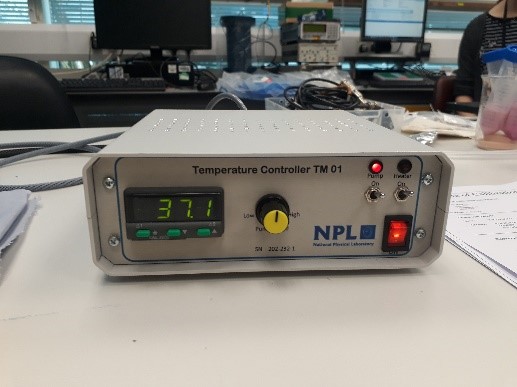Ultrasound is widely used for diagnostic medical imaging and is a useful way of examining many of the body's internal organs. There are two types of ultrasound procedure:
When developing new equipment, medical device manufacturers need to follow the IEC 60601 standard, ensuring that the new device operates within the accepted limits. When it comes to safety and essential performance of ultrasonic diagnostic equipment, IEC 60601-2-37 standard sets the test criteria for temperature measurement.
In the case of invasive procedures, transducers need to be tested in specific conditions with the test object temperature maintained at 37 °C at least, mimicking human body temperature.
NPL came up with a bespoke solution of a temperature-controlled ultrasound phantom, whose design offered the option to elevate the temperature of the test object between room temperature and 40 °C, and keep it constant through a closed loop control.
In addition, the solution was adapted to the surface temperature test phantom, used to test compliance with the limits of ultrasound transducer surface temperature, which also included a cavity to accommodate the invasive transducer.
This solution wi ll allow increased accuracy when monitoring the temperature of the transducer head surface, by ensuring the testing is carried out at a temperature which is as close as possible to a real environment setting.
ll allow increased accuracy when monitoring the temperature of the transducer head surface, by ensuring the testing is carried out at a temperature which is as close as possible to a real environment setting.
The solution provides confidence in transducer performance in a real-world situation for use in the human body whilst remaining compliant with IEC 60601-2-37 standards.